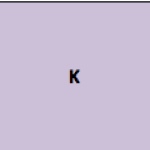Information
-
Audit Title
-
Document No.
-
Client / Site
-
Conducted on
-
Prepared by
-
Location
-
Personnel
Structure, Function, & Information Processing
-
Systems of specialized cells within organisms help them perform the essential functions of life, which involve chemical reactions that take places between different types of molecules, such as water, proteins, carbohydrates, lipids, and nucleic acids.
-
All cells contain genetic information in the form of DNA molecules. Genes are regions in the DNA that contain the instructions that code for the formation of proteins, which carry out most of the work of cells.
-
Multicellular organisms have a hierarchial structural organization, in which any one system is made up of numerous parts and is itself a component of the next level.
-
Feedback mechanisms maintain a living system's internal conditions within certain limits and mediate behaviors, allowing it to remain alive and functional even as exteral conditions change within some range. Outside that range the organism cannot survive. Feedback mechanisms can encourage or discourage what is going on inside the living system.
-
In complex animals, the brain is divided into several distinct regions and circuits each of which primarily serves dedicated functions such as visual perception, auditory perception, interpretation of perceptual information, guidance of motor movement, and decision making about actions to take in the event of certain inputs.
-
In addition, some circuits give rise to emotions and memories that motivate organisms to seek rewards, avoid punishments, develop fears, or form attachments to members of their own species and, in some cases to individuals of other species.
-
The integrated functioning of all parts of the brain is important for successful interpretation of inputs and generation of behaviors in response to them.
Inheritance & Variation of Traits
-
In multicellular organisms individual cells grow and then divide via a process called mitosis, thereby allowing the organisms to grow. The organism begins as a single cell (fertilized egg) that divides successively to produce many cells, with each parent cell passing identical genetic materials to both daughter cells.
-
As successive subdivisions of an embryo's cells occur, programmed genetic instructions and small differences in their immediate environments activate or inactivate different genes which cause the cells to develop differently, a process called differentiation. Cellular division and differentation produce and maintain a complex organism, composed of systems of tissue and organs that work together to meet the needs of the whole organism.
-
In sexual reproduction a specialized type of cell divison called meiosis occurs that results in the production of sex cells such as gamates in animals (sperm and eggs), which contain only one member from each chromosome pair in the parent cell.
-
In all organisms the genetic instructions for forming species' characteristics are carried in the chromosomes.
-
Each chromosome consists of a single very long DNA molecule, and each gene on the chromosome is a particular segment of that DNA. The instructions for forming species characteristics are carried in DNA.
-
All cells in an organism have the same genetic content, but the genes used by the cell may be regulated in different ways. Not all DNA codes are for a protein; some segments of DNA are involved in regulatory or structural functions and some have no as-yet known function.
-
The ifnormation passed from parents to offspring is coded in the DNA molecules that form the chromosomes.
-
Although DNA replication is tightly regulated and remarkably accurate, errors do occur and result in mutations, which are also a source of genetic variations. Environmental factors can also cause mutations in genes and viable mutations are inherited.
-
Environmental factors also affect expression of traits, and hence affect the probability of occurences of traits in a population. Thus the variation and distribution of traits observed depends on both genetic and environmental factors.
Matter & Energy in Organisms & Ecosystems
-
The process of photosynthesis converts light energy to stored chemical energy by converting carbon dioxide plus water into sugar plus released oxygen. The sugar molecules thus formed contain carbon, hydrogen, and oxygen; their hydrocarbon backbones are used to make amino acids and other carbon-based molecules that can be assembled into larger molecules.
-
As matter and energy flow through different organizational levels to living systems, chemical elements are recombined in different ways to form different products.
-
As a result of these chemical reactions, energy is transferred from one system of interacting molecules to another.
-
Anaerobic cellular respiration follow a different and less efficient chemical pathway to provide energy in cells.
-
Cellular respiration also releases the enrgy needed to maintain body temperature despite ongoing energy loss to the surrounding environemnt.
-
Matter and energy are conserved in each change. This is true of all biological systems, from individual cells to ecosystems.
-
Photosynthesis and cellular respiration provide most of the energy for life processes.
-
Plants or algae forms the lowest level of the food web. At each link upwards in the food web only a small fraction of the matter consumed at the lower level is transferred upwards, to produce growth and release energy in cellular respiration at the higher level. Given this inefficiency there are generally fewer organisms at higher levels of the food web, and there is a limit to the number of organisms that an ecosystem can sustain.
-
The chemical elements that make up the molecules of organisms pass through food webs and into and out of the atmosphere and soil and that are combined and recombined in different ways. At each link to an ecosystem matter and energy are conserved.
-
Some matter reacts to release energy for life functions, some matter is stored in newly made structures, and much is discarded.
-
Competition among species is ultimately competition for the matter and energy needed for life.
-
Photosynthesis and cellular respiration are important components of the carbon cycle, in which carbon is exchanged between the biosphere atmosphere, oceans, and geosphere through chemical, physical, geological, and biological processes.
Independent Relationships in Ecosystems
-
Ecosystems have carrying capacities, which are limits to the number of organisms and populations they can support. These limits result from such factors as the availability of living and nonliving resources and from challenges such as predation, competition, and disease. Organisms would have the capacity to produce populations of great size were it not for the fact that environments and resources are finite.
-
A complex set of interactions within an ecosystem can keep its numbers and types of organisms relatively constant over long periods of time under stable conditions.
-
If a modest biological of physical disturbance to an ecosystem occurs, it may return to its more or less original status as opposed to becoming a very different ecosystem.
-
Extreme fluctuation in conditions or the size of any population, however, can challenge the functioning of ecosystems in terms of resources and habitat availability.
-
Moreover, anthropogenic changes in the environment, including habitat destruction, pollution, introduction of invasive species, overexploitation, and climate change can disrupt an ecosystem and threaten the survival of some species.
-
Animals, including humans, having a strong social affiliation with members of their own species will suffer behaviorally as well as physiologically, if reared in isolation, even if all their physical needs are met. Some forms of affiliation arise from the bonds between the offspring and parents or other groups from among peers. Group behavior has evolved because membership can increase the chance of surivival for individuals and their genetic relatives.
-
Biodiversity is increased by the formation of new species (speciation) and decreased by loss of species (extinction). Biological extinction, being irreversible, is a critical factor in reduction the planet's natural capital
-
Humans depend on the living world for the resources and other benefits provided by biodiversity. But human activity also has adverse impacts on biodiversity through overpopulation, overexploitation, habitat destruction, pollution, introduction of invasive species, and climate change. These problems have the potential to cause a major wave of biological extinctions, as many species or populations of a given species, unable to survive in changed environments die out.
-
The efect of such extinction may be harmful to humans and other living things. Thus sustaining biodiversity so that ecosystems functioning and productivity are maintained is essential to supporting and enhancing life on Earth. Sustaining biodiversity also aids humanity by preserving landscapes of recreational or inspirational value.
Natural Selection & Evolution
-
Genetic information, like the fossil record, also provides evidence of evolution. DNA sequences vary among species, but there are many overlaps; in fact the ongoing branching that produces multiple lines of descent can be inferred by comparing the DNA sequences of different organisms. Such information is also derivable for the similarities and differences in amino acide sequences and from anatomical and embryological evidence.
-
Natural selection occurs only if there is both (1) variation in genetic information between organisms in a population and variation in the expression f the genetic information (trait variation) that leads to differences in performance among individuals.
-
The traits that positively affect survival are more likely to be reproduced and thus are more common in the population.
-
Natural selection is the result of four factors; (1) the potential for a species to increase in number, (2) the genetic variations of individuals in a species due to mutation and sexual reproduction, (3) competition for an environment's limited supply of the resources that individuals need in order to survive and reproduce, and (4) the ensuing proliferation of the organisms that are better able to survive and reproduce in that environment.
-
Natural selection leads to adaptation, that is to a population dominated by organisms that are anatomically, behaviorally, and physiologically well suited to survive and reproduce in a specific environment. The differential surivival and reproduction of organisms in a population that have an advantageous heritable trait leads to an increase in the proportion of individuals in future generations that have the trait and to a decrease in the proportions of individuals that do not.
-
Adaptation also means that the distribution of traits in a population can change when conditions change.
-
Changes in the physical environment, whether naturally occuring or human induced, have thus contributed to the expansion of some species, the emergence of new distinct species as populations diverge under different conditions, and the decline, even possible extinctions of some species.
-
Species become extinct because they can no longer survive and reproduce in their altered environment. If members cannot adjust to change that is too fast or drastic, the opportunity for the species' evolution is lost.









